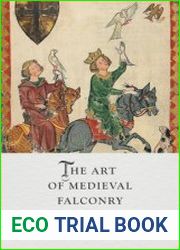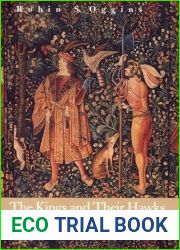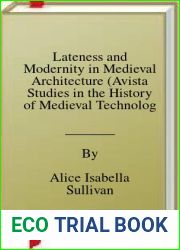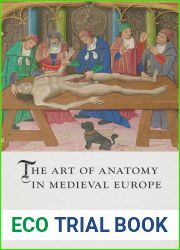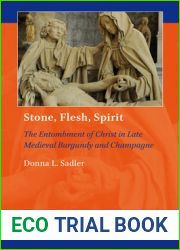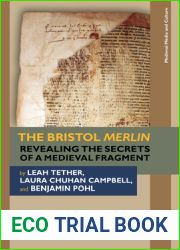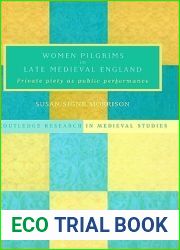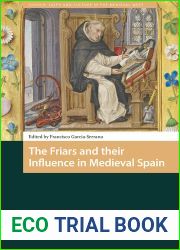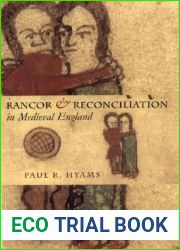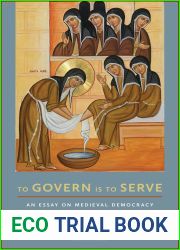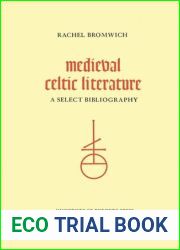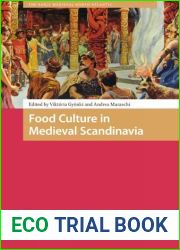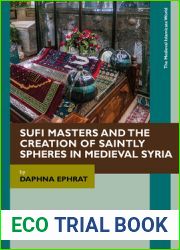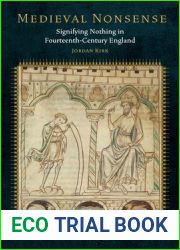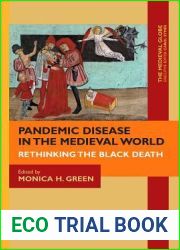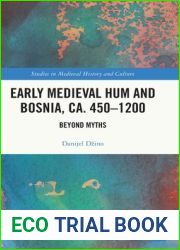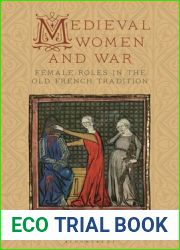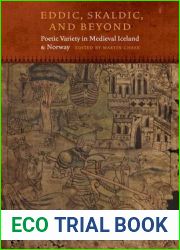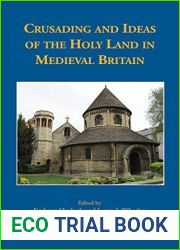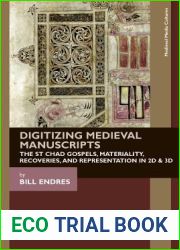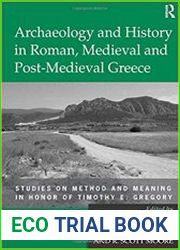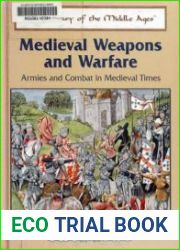
BOOKS - The Art of Medieval Falconry (Medieval Lives)

The Art of Medieval Falconry (Medieval Lives)
Author: Yannis Hadjinicolaou
Year: 2024
Pages: 233
Format: PDF
File size: 31,7 МБ
Language: ENG

Year: 2024
Pages: 233
Format: PDF
File size: 31,7 МБ
Language: ENG

The Art of Medieval Falconry Medieval Lives In the medieval era, falconry was more than just a sport or a means of hunting; it was a symbol of power, wealth, and status. The practice of training and using birds of prey to hunt small game was reserved for the elite classes, and it was a way for them to showcase their wealth and authority. The art of medieval falconry is a fascinating topic that has been explored in depth by Yannis Hadjinicolaou in his book "The Art of Medieval Falconry: Medieval Lives. " This book offers a beautifully illustrated tour of the visual culture of medieval falconry in Europe and beyond, providing readers with a comprehensive understanding of the history and significance of this ancient practice. The book begins by explaining the importance of falconry as a symbol of power and status, highlighting how the practice was not only a means of hunting but also a display of wealth and authority. The author then delves into the visual culture surrounding falconry, exploring how imagery, equipment, and even the birds themselves moved through the medieval world.
Искусство средневековой соколиной охоты Средневековые жизни В средневековую эпоху соколиная охота была больше, чем просто спорт или средство охоты; это был символ власти, богатства и статуса. Практика обучения и использования хищных птиц для охоты на мелкую дичь была зарезервирована для элитных классов, и это был способ для них продемонстрировать своё богатство и авторитет. Искусство средневековой соколиной охоты - увлекательная тема, которая была подробно исследована Яннисом Хаджиниколау в его книге "Искусство средневековой соколиной охоты: средневековые жизни. "Эта книга предлагает прекрасно иллюстрированный тур по визуальной культуре средневековой соколиной охоты в Европе и за ее пределами, предоставляя читателям всестороннее понимание истории и значения этой древней практики. Книга начинается с объяснения важности соколиной охоты как символа власти и статуса, подчеркивая, что эта практика была не только средством охоты, но и проявлением богатства и авторитета. Затем автор углубляется в визуальную культуру, окружающую соколиную охоту, исследуя, как образы, оборудование и даже сами птицы перемещались по средневековому миру.
L'art de la fauconnerie médiévale La vie médiévale À l'époque médiévale, la fauconnerie était plus qu'un simple sport ou un moyen de chasse ; c'était un symbole de pouvoir, de richesse et de statut. L'apprentissage et l'utilisation des oiseaux de proie pour la chasse au petit gibier étaient réservés aux classes d'élite, ce qui leur permettait de démontrer leur richesse et leur crédibilité. L'art de la fauconnerie médiévale est un thème fascinant qui a été exploré en détail par Yannis Hajinikolau dans son livre "L'art de la fauconnerie médiévale : la vie médiévale. "Ce livre offre une visite parfaitement illustrée de la culture visuelle de la fauconnerie médiévale en Europe et au-delà, offrant aux lecteurs une compréhension complète de l'histoire et de la signification de cette pratique ancienne. livre commence par expliquer l'importance de la fauconnerie comme symbole du pouvoir et du statut, soulignant que cette pratique n'était pas seulement un moyen de chasse, mais aussi une manifestation de richesse et d'autorité. L'auteur s'intéresse ensuite à la culture visuelle entourant la chasse à la fauconnerie, explorant comment les images, le matériel et même les oiseaux eux-mêmes se déplacent dans le monde médiéval.
arte de la caza de halcón medieval Vidas medievales En la Edad Media, la caza de halcón era algo más que un mero deporte o un medio de caza; era un símbolo de poder, riqueza y estatus. La práctica de enseñar y usar aves de rapiña para cazar pequeños animales estaba reservada a las clases de élite, y era una manera de que demostraran su riqueza y autoridad. arte del halcón medieval de la caza es un tema fascinante que fue explorado en detalle por Giannis Hajinikolau en su libro "arte del halcón medieval de la caza: vidas medievales. "Este libro ofrece un recorrido perfectamente ilustrado por la cultura visual de la caza medieval de halcón dentro y fuera de , proporcionando a los lectores una comprensión integral de la historia y el significado de esta práctica antigua. libro comienza explicando la importancia de la caza de halcón como símbolo de poder y estatus, destacando que esta práctica no sólo era un medio de caza, sino también una manifestación de riqueza y autoridad. A continuación, el autor profundiza en la cultura visual que rodea la caza de halcones, explorando cómo las imágenes, los equipos e incluso las propias aves se movían por el mundo medieval.
L'arte della caccia medievale falco vita medievale In epoca medievale la caccia di falco era più di uno sport o un mezzo di caccia; era un simbolo di potere, ricchezza e status. La pratica dell'addestramento e dell'uso degli uccelli predatori per la caccia ai piccoli animali era riservata alle classi d'elite, ed era un modo per loro di dimostrare la loro ricchezza e credibilità. L'arte della caccia medievale di falco è un tema affascinante che è stato approfondito da Yannis Hajinikolau nel suo libro "L'arte della caccia medievale di falco: vite medievali. "Questo libro offre un tour perfettamente illustrato della cultura visiva della caccia medievale in e oltre, fornendo ai lettori un'ampia comprensione della storia e del significato di questa antica pratica. Il libro inizia spiegando l'importanza della caccia di falco come simbolo di potere e di status, sottolineando che questa pratica non era solo un mezzo di caccia, ma anche una dimostrazione di ricchezza e credibilità. Poi l'autore approfondisce la cultura visiva che circonda la caccia ai falchi, esplorando come le immagini, le attrezzature e persino gli uccelli stessi si spostavano nel mondo medievale.
Kunst der mittelalterlichen Falknerei Mittelalterliches ben Im Mittelalter war die Falknerei mehr als nur ein Sport oder ein Jagdmittel; Es war ein Symbol für Macht, Reichtum und Status. Die Praxis der Ausbildung und Verwendung von Greifvögeln für die Jagd auf Kleinwild war den Eliteklassen vorbehalten, und es war eine Möglichkeit für sie, ihren Reichtum und ihre Autorität zu demonstrieren. Die Kunst der mittelalterlichen Falknerei ist ein faszinierendes Thema, das von Giannis Hadjinikolau in seinem Buch "Die Kunst der mittelalterlichen Falknerei: Mittelalterliche ben. "Dieses Buch bietet eine wunderschön illustrierte Tour durch die visuelle Kultur der mittelalterlichen Falknerei in und darüber hinaus und bietet den sern einen umfassenden Einblick in die Geschichte und Bedeutung dieser alten Praxis. Das Buch beginnt mit einer Erklärung der Bedeutung der Falknerei als Symbol für Macht und Status und betont, dass diese Praxis nicht nur ein Mittel zur Jagd war, sondern auch eine Manifestation von Reichtum und Autorität. Der Autor taucht dann in die visuelle Kultur rund um die Falknerei ein und untersucht, wie sich Bilder, Ausrüstung und sogar die Vögel selbst durch die mittelalterliche Welt bewegten.
Sztuka średniowiecznego Falconry średniowiecznego życia W średniowiecznej epoce, falconry było więcej niż tylko sport lub środek polowania; był symbolem władzy, bogactwa i statusu. Praktyka treningu i wykorzystywania ptaków drapieżnych do polowań na małe dziczyzny była zarezerwowana dla klasy elitarnej i była dla nich sposobem na wykazanie się bogactwem i autorytetem. Sztuka średniowiecznego falconry jest fascynującym tematem, który został szczegółowo zbadany przez Giannis Hadjinikolaou w książce "Sztuka średniowiecznego Falconry: średniowieczne życie. "Książka ta oferuje pięknie ilustrowane zwiedzanie kultury wizualnej średniowiecznego falkonra w Europie i poza nią, zapewniając czytelnikom kompleksowe zrozumienie historii i znaczenia tej starożytnej praktyki. Księga zaczyna się od wyjaśnienia znaczenia falkonry jako symbolu władzy i statusu, podkreślając, że praktyka ta była nie tylko środkiem polowania, ale także przejawem bogactwa i autorytetu. Następnie autor zagłębia się w kulturę wizualną otaczającą falkonry, badając, jak obrazy, sprzęt, a nawet ptaki poruszały się po średniowiecznym świecie.
''
Ortaçağ Falconry Sanatı Ortaçağ Yaşamları Ortaçağ döneminde, falconry sadece bir spor ya da avcılık aracı değildi; Güç, zenginlik ve statü sembolüydü. Küçük av hayvanları için yırtıcı kuşları eğitme ve kullanma pratiği seçkin sınıflara ayrılmıştı ve bu onların zenginliklerini ve otoritelerini göstermeleri için bir yoldu. Ortaçağ şahini sanatı, Giannis Hadjinikolaou tarafından "Ortaçağ Şahini Sanatı: Ortaçağ Yaşamları'adlı kitabında ayrıntılı olarak araştırılan büyüleyici bir konudur. "Bu kitap, Avrupa ve ötesindeki ortaçağ şahinciliğinin görsel kültürünün güzel bir şekilde resmedilmiş bir turunu sunuyor ve okuyuculara bu eski uygulamanın tarihi ve önemi hakkında kapsamlı bir anlayış sunuyor. Kitap, şahinciliğin bir güç ve statü sembolü olarak önemini açıklayarak başlar ve bu uygulamanın sadece bir avlanma aracı değil, aynı zamanda zenginlik ve otoritenin bir tezahürü olduğunu vurgular. Yazar daha sonra falconry'yi çevreleyen görsel kültürü araştırıyor, görüntülerin, ekipmanların ve hatta kuşların kendilerinin ortaçağ dünyasında nasıl hareket ettiğini araştırıyor.
فن حياة الصقور في العصور الوسطى في العصور الوسطى، كانت الصيد بالصقور أكثر من مجرد رياضة أو وسيلة للصيد ؛ كان رمزا للسلطة والثروة والمكانة. كانت ممارسة تدريب واستخدام الطيور الجارحة لصيد الألعاب الصغيرة مخصصة لفصول النخبة، وكانت وسيلة لهم لإظهار ثروتهم وسلطتهم. فن الصيد بالصقور في العصور الوسطى هو موضوع رائع تم استكشافه بالتفصيل من قبل جيانيس هاجينيكولاو في كتابه «فن الصقور في العصور الوسطى: حياة العصور الوسطى». "يقدم هذا الكتاب جولة مصورة بشكل جميل للثقافة البصرية للصيد بالصقور في العصور الوسطى في أوروبا وخارجها، مما يوفر للقراء فهمًا شاملاً لتاريخ وأهمية هذه الممارسة القديمة. يبدأ الكتاب بشرح أهمية الصيد بالصقور كرمز للسلطة والمكانة، مع التأكيد على أن هذه الممارسة لم تكن وسيلة للصيد فحسب، بل كانت أيضًا مظهرًا للثروة والسلطة. ثم يتعمق المؤلف في الثقافة البصرية المحيطة بالصيد بالصقور، ويستكشف كيف انتقلت الصور والمعدات وحتى الطيور نفسها عبر عالم العصور الوسطى.
中世紀獵鷹狩獵藝術中世紀生活在中世紀時代,獵鷹狩獵不僅僅是運動或狩獵手段;它是權力,財富和地位的象征。訓練和使用猛禽狩獵小雛鳥的做法保留給精英階層,這是他們展示自己的財富和權威的一種方式。中世紀獵鷹的藝術是一個引人入勝的主題,詹尼斯·哈吉尼科勞(Jannis Hajinikolau)在其著作《中世紀獵鷹的藝術:中世紀生活》中對此進行了詳細研究。"這本書提供了歐洲及其他地區中世紀獵鷹視覺文化的精美插圖之旅,為讀者提供了對這種古老習俗的歷史和含義的全面了解。這本書首先解釋了獵鷹作為權力和地位的象征的重要性,強調這種做法不僅是狩獵的手段,而且是財富和權威的體現。然後,作者深入研究了獵鷹狩獵周圍的視覺文化,探討了圖像,設備甚至鳥類本身如何在中世紀世界中移動。







